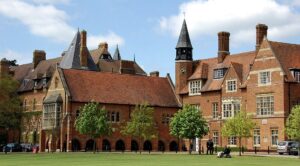For many, a full, luscious beard is not just a fashion statement but a symbol of masculinity and confidence. However, not everyone is blessed with the genetics to grow a dense and well-defined beard. Luckily, advancements in medical science have opened doors to solutions that cater to this desire for a fuller facial mane through a procedure known as a beard hair transplant.
In this blog, we will learn about the procedure of a beard hair transplant, followed by the answers to a few frequently asked questions about the surgery. This post is drafted using the details shared by Dr. Urvashi Chandra, who is considered the top surgeon for beard hair transplant in Delhi at Chandra Clinic.
Understanding the Procedure
The beard hair transplant procedure involves two vital steps: extraction and implantation. During extraction, the patient, comfortably lying face down, receives local anesthesia while ultra-fine punches meticulously gather the required hair units from the scalp. Dr. Urvashi Chandra personally handles this crucial phase, ensuring quality and minimal scarring.
The extracted grafts are then sorted and counted for subsequent implantation. This phase, equally crucial, involves local anesthesia for the beard area and the delicate, artistic placement of grafts using cutting-edge implanters. The aim here is not merely to implant hair but to replicate the natural angle, direction, and distribution of beard hair for an absolutely natural look.
Post-Procedure and Expectations
The aftereffects of the procedure are surprisingly comfortable. Patients may experience minimal discomfort, with scabs in the beard area falling off within 7 to 10 days. The newly implanted hair begins to grow within a few days, but the full, lush beard appearance typically emerges between 6 and 9 months.
The results? A confident, natural-looking beard that’s indistinguishable from one achieved organically.
Is the procedure for a beard hair transplant painful?
Meticulous anesthesia techniques ensure the utmost comfort for the patients throughout the procedure. Approximately 95% of the patients report no discomfort or pain.
When can one return to work after a beard hair transplant?
One can comfortably resume work the very next day. While there might be minor scabbing in the beard area, these typically fall off within ten days, causing no significant discomfort.
When will one see the full results of the beard hair transplant?
The complete and natural-looking results of the transplant generally manifest between 8 and 10 months after the procedure.
Is the new hair permanent?
Absolutely, the transplanted hair is permanent, providing a long-lasting solution for a fuller beard.
Will the area where the beard grows be marked or scarred?
Utilizing advanced implanter pens, we ensure a procedure with minimal to zero possibility of marks or scars in the beard area.
Conclusion
At Chandra Clinic, a renowned hair transplant clinic in Delhi, under the expertise of Dr. Urvashi Chandra, individuals seeking a thicker, more robust beard can find their solution.
Beard transplantation can help men to get a more masculine looking face and confidence back with thicker beards. For further details and personalized treatment, feel free to connect with Dr. Urvashi Chandra at Chandra Clinic.














